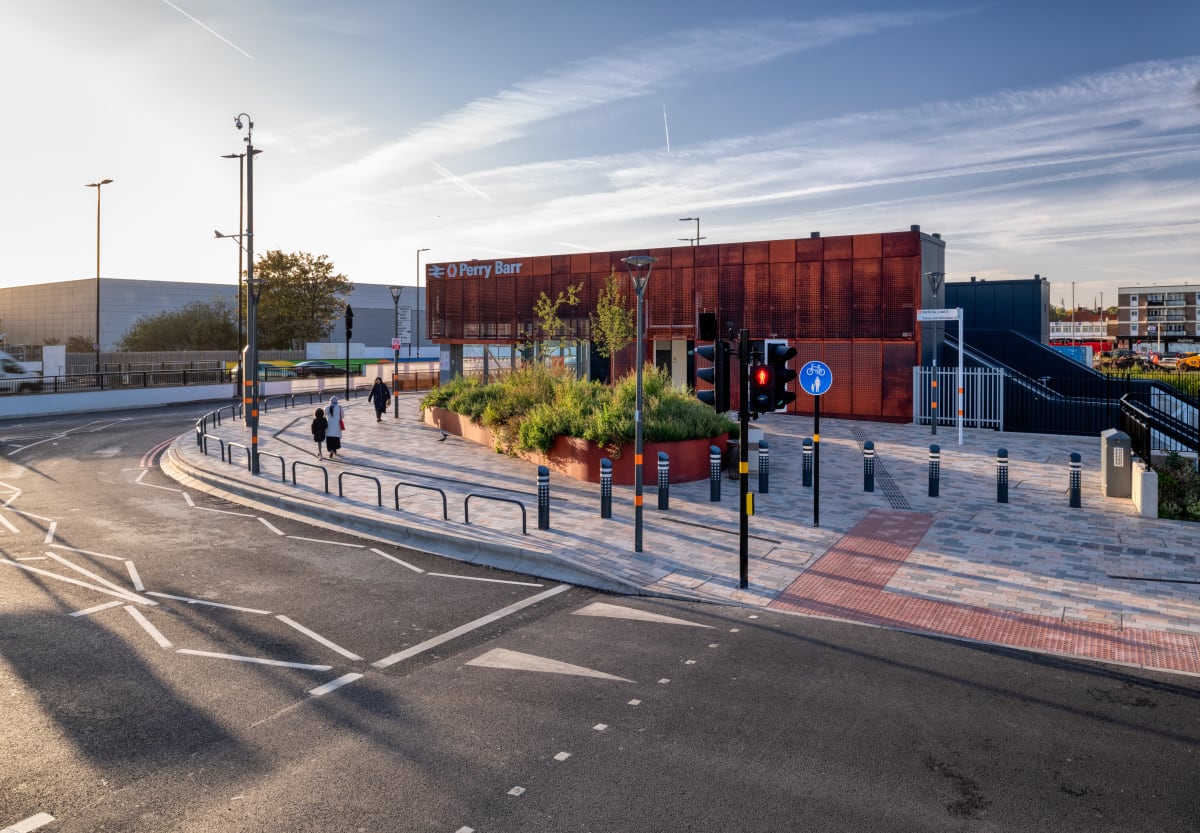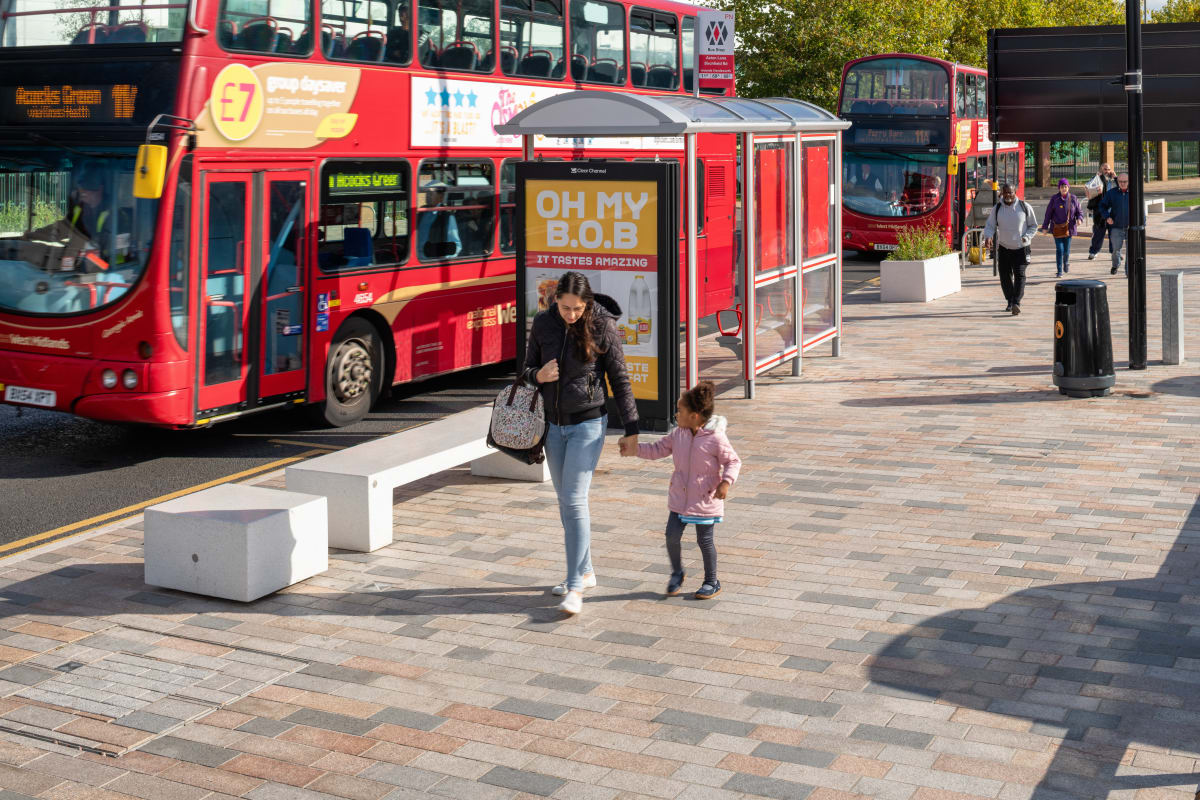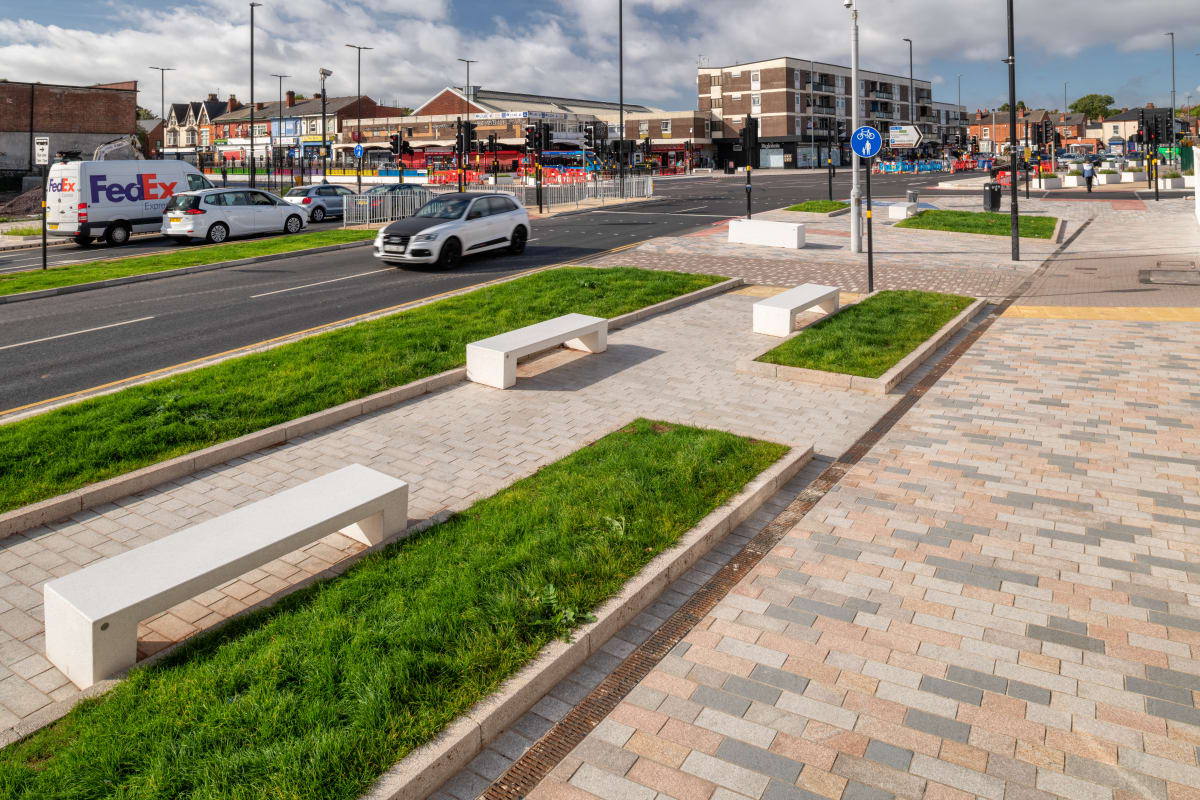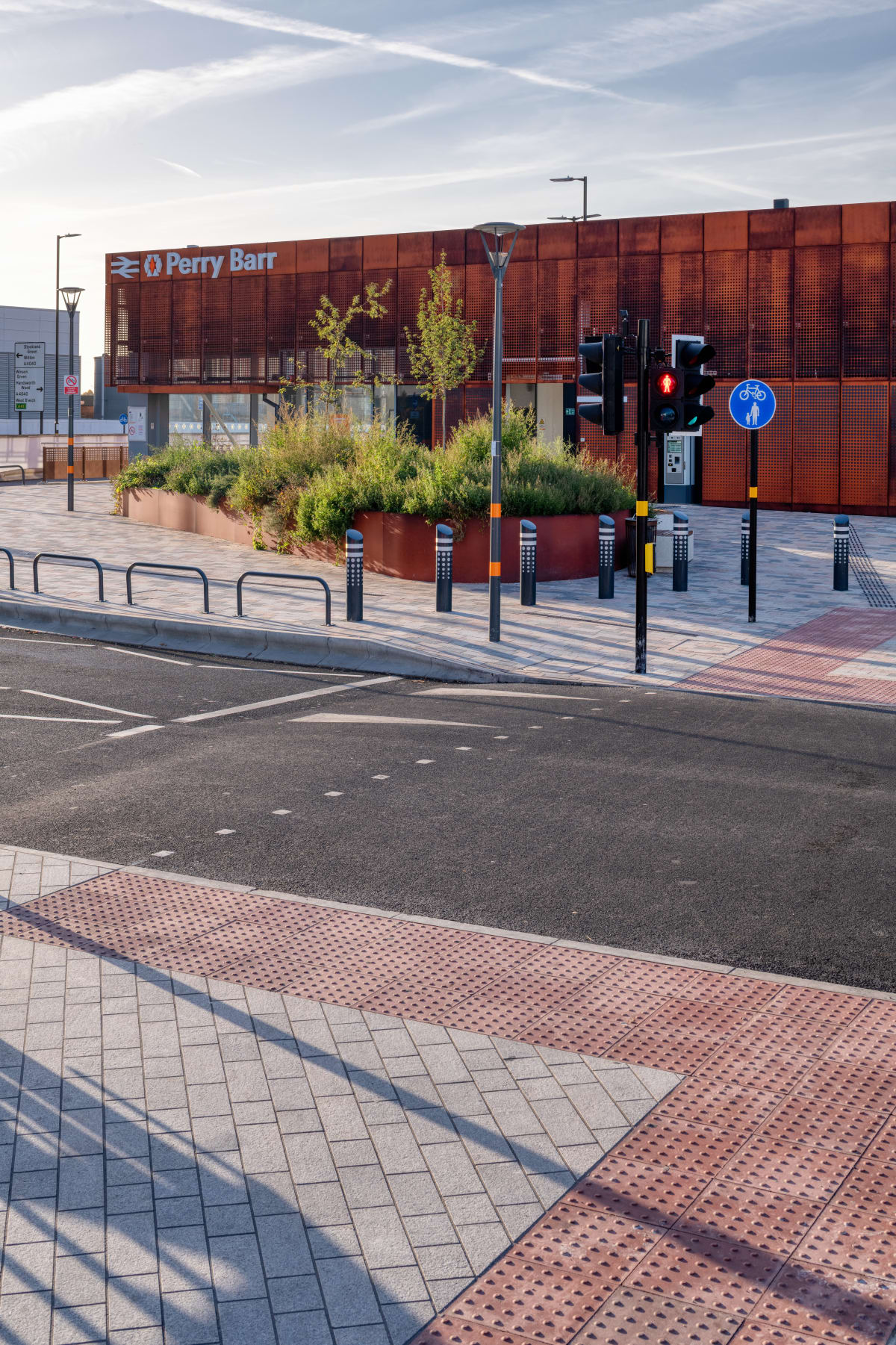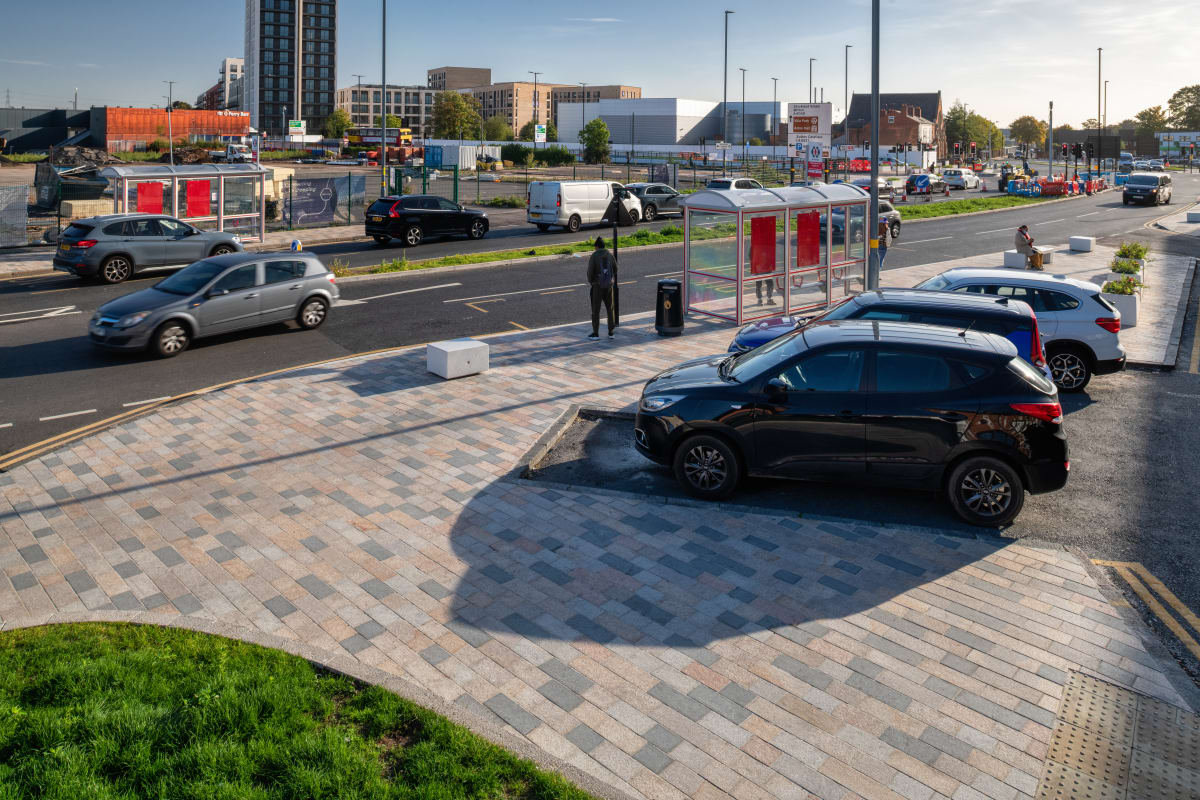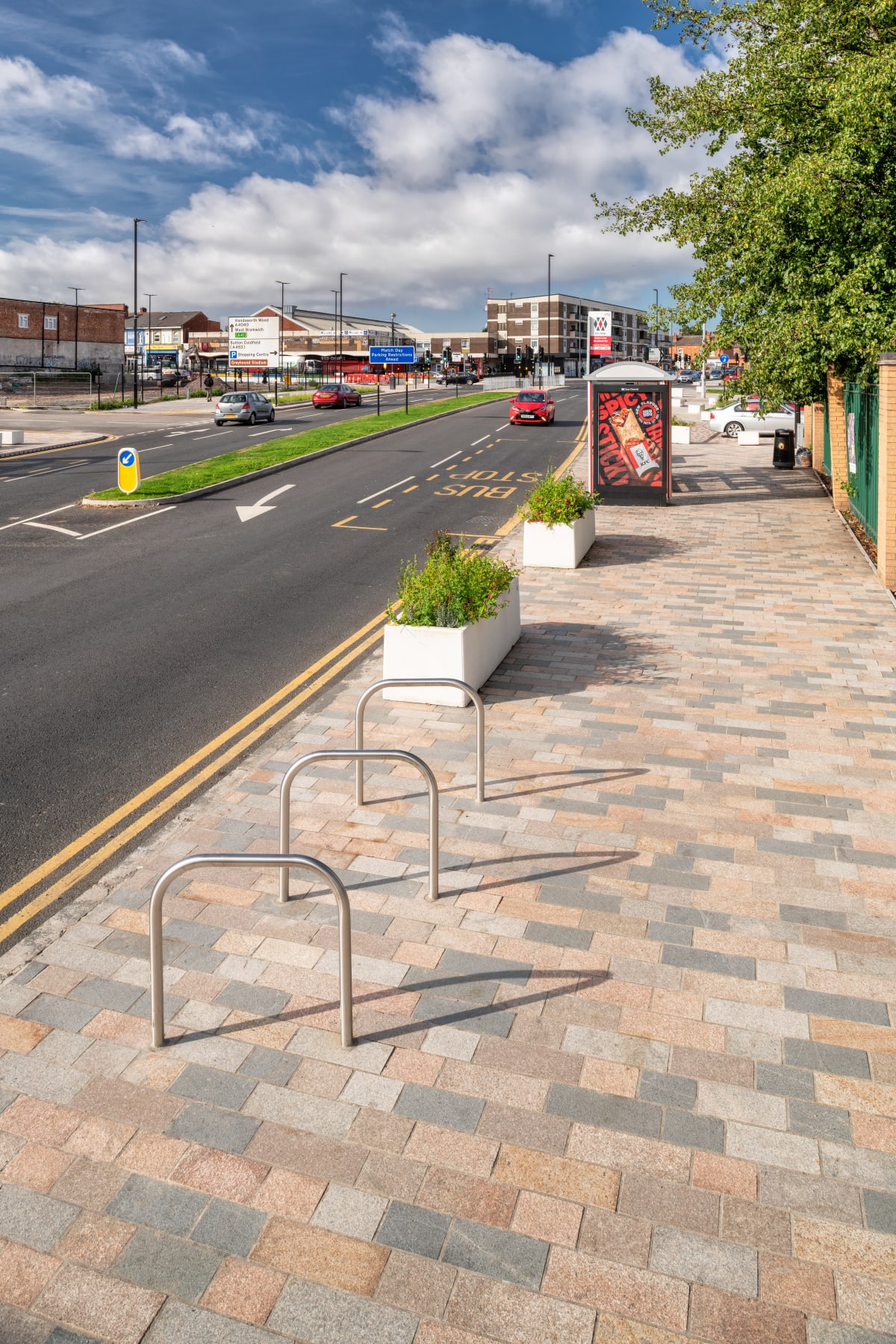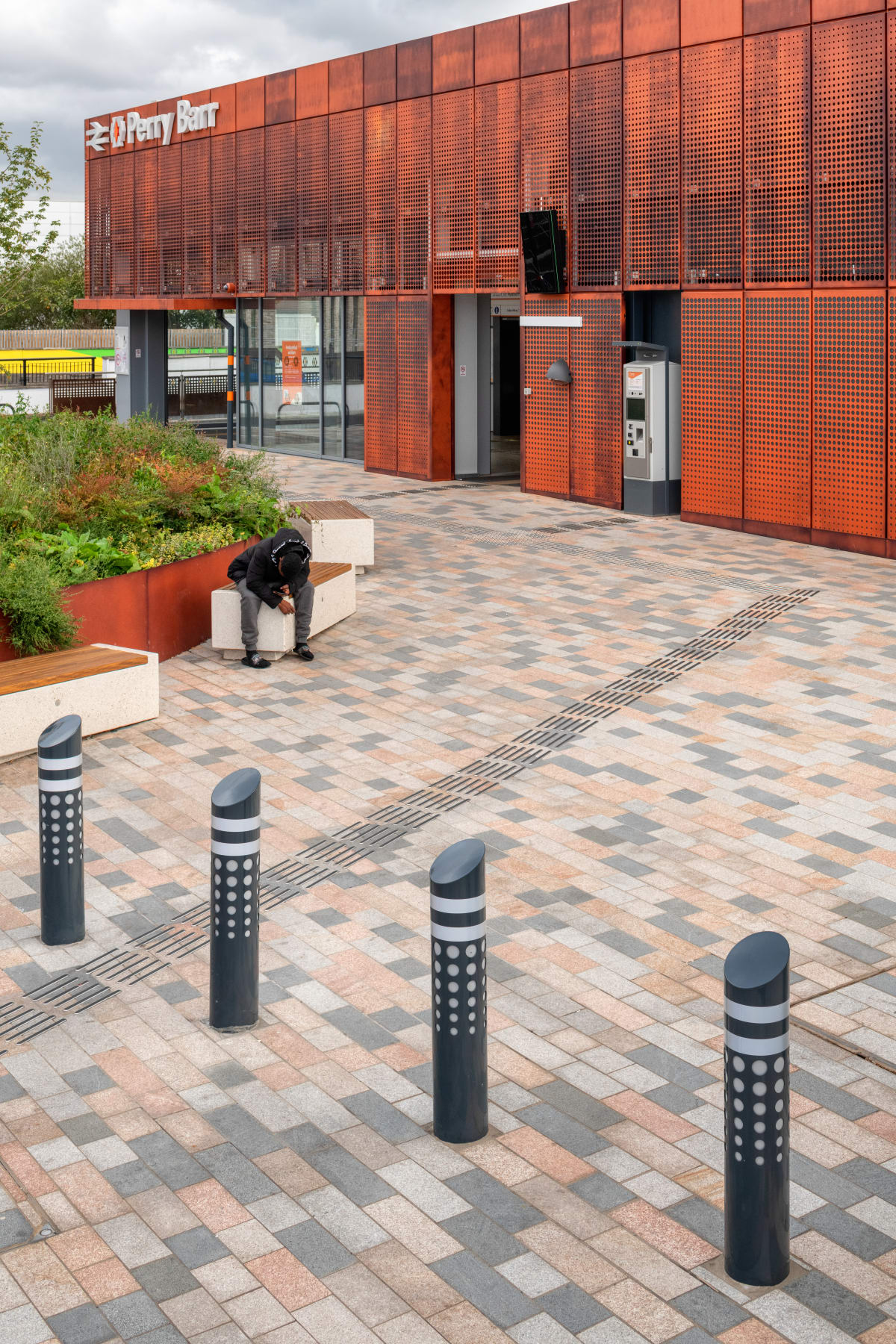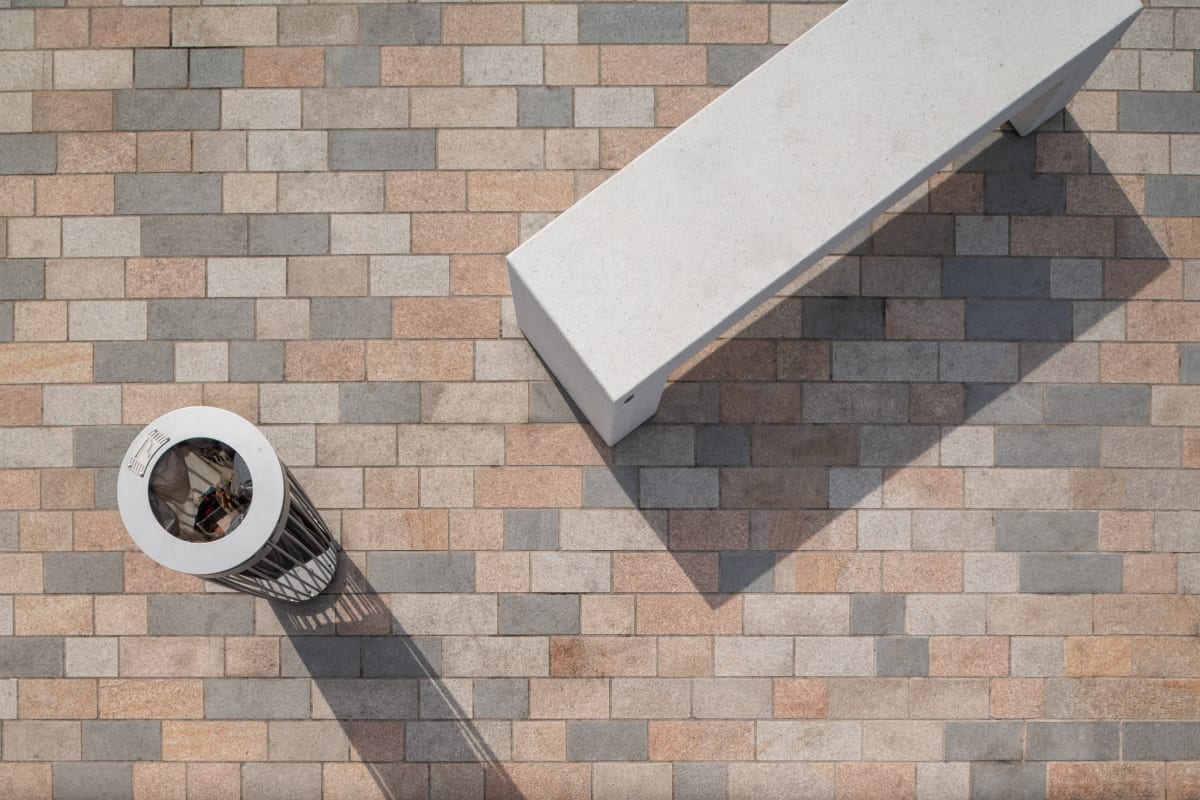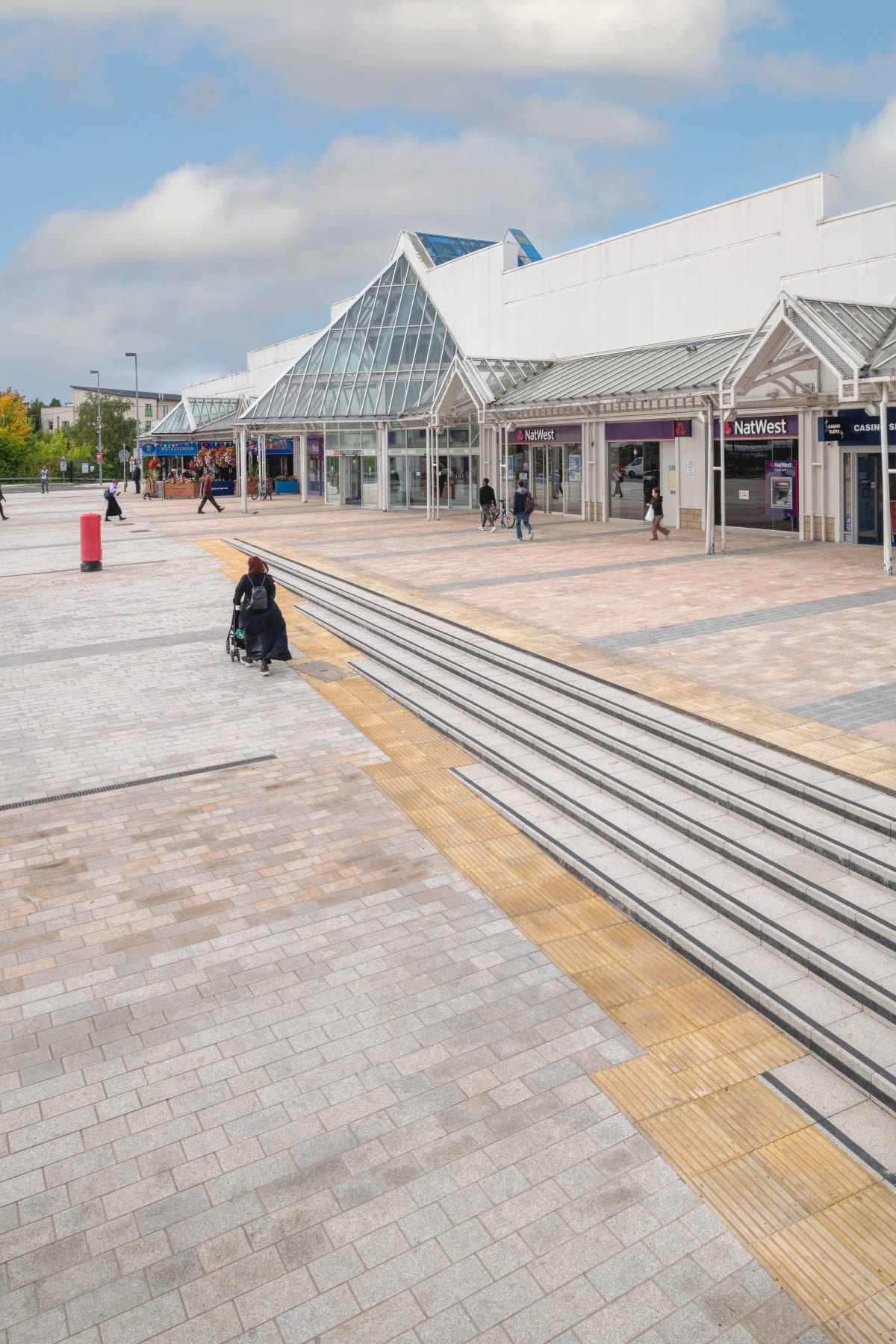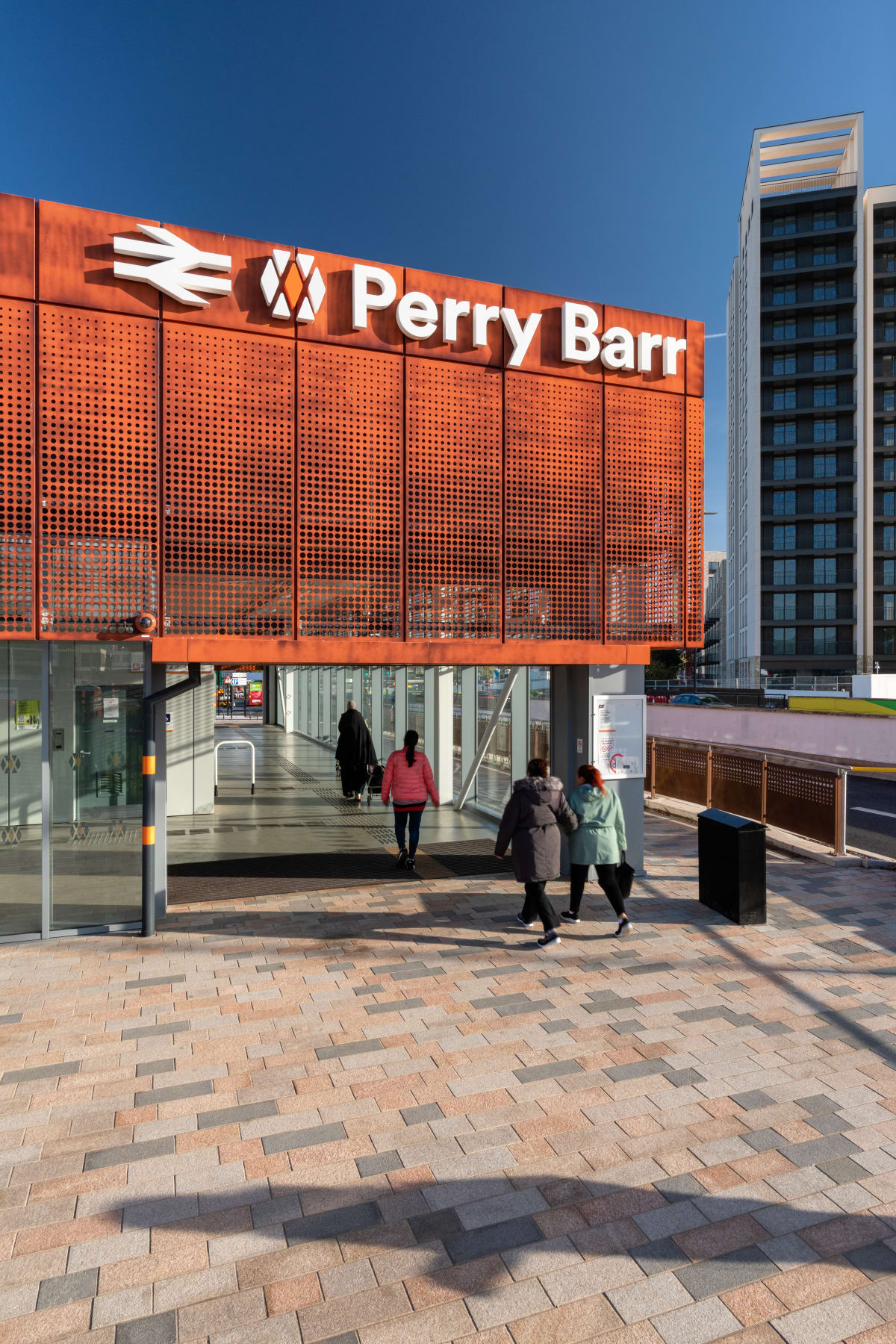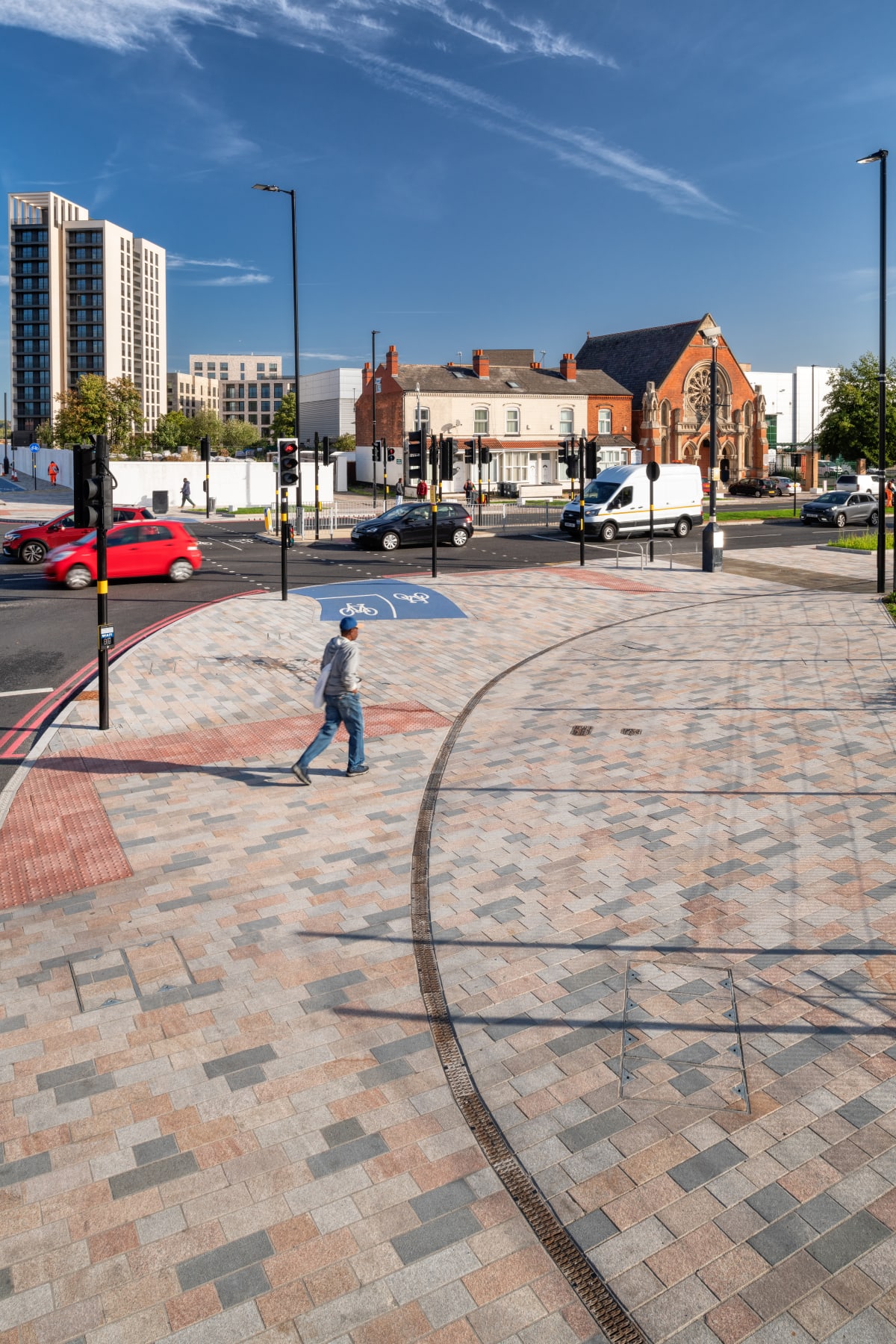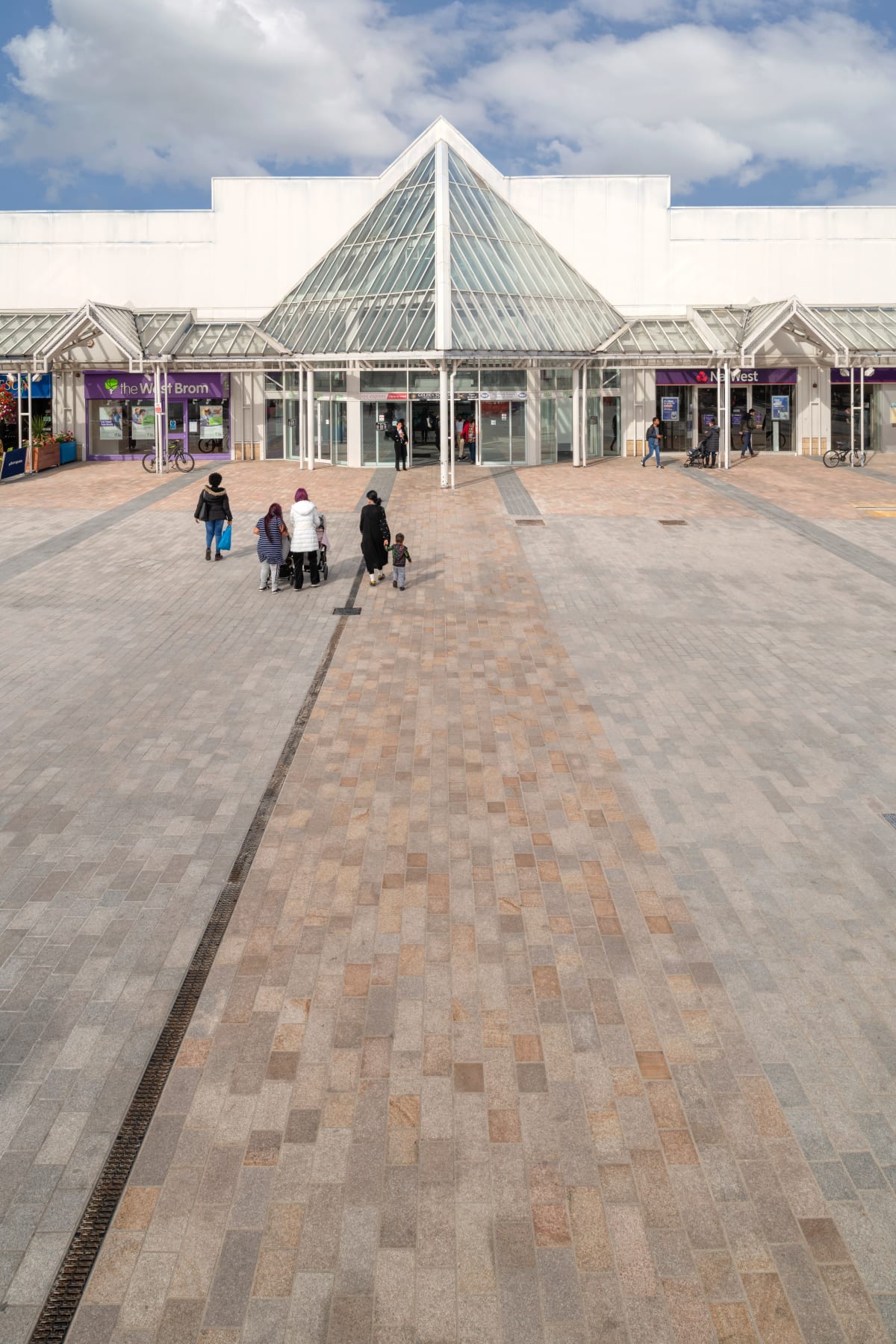Location
Perry Barr, Birmingham, B20 3JE
Contractors: Tarmac (A34 Highway, Bus Interchange, One Stop), Galliford Try (Perry Barr Station)
Landscape Architects: PJA / Arcadis / WSP Birmingham
Client: Birmingham City Council
Perry Barr is becoming an exciting place to live, work, and visit, with new homes, easy transport connectivity, an exciting town centre offer, and safe, accessible green spaces.
This major regeneration project forms part of the Perry Barr 2040: A Vision for Legacy Masterplan. Significant sustainable growth in this key area of the city over the next two decades will create long-term benefits.
The A34 element of the scheme aims to deliver more sustainable transport alternatives including bus priority and promoting active travel as well as providing the key route between the city and the newly redeveloped Alexander Stadium and beyond.
Landscape Architects Arcadis and PJA were commissioned by Birmingham City Council’s City Design Team to develop a Public Realm Strategy for Perry Barr. As part of this the teams engaged with Marshalls and we were able to bring examples of good urban realm design that met the objectives they aimed to achieve. A walking tour of similar prestigious projects in London showcased integrated product use and product interfaces between different use areas.
With this kind of vast experience and capabilities in prominent multi-phased projects along with our own logistics operation and sustainability credentials, Marshalls were selected as a key supplier.
In this role Marshalls supported the team on the creation of a material pallet which would complement the Perry Barr vision and tie together the major projects within the strategy. A detailed product selection process was undertaken with materials evaluated against the key criteria of aesthetics, quality and performance of material, ongoing availability of material and value for money.
Through consultation with all designers and contractor stakeholders, a colour pallet was developed to provide guidance on the look and feel sought for the area, broken down into three tiers of gold, silver and bronze which reflect the key spaces and give them each a distinctive look.
A striking mix of flamed Marshalls’ granites including the light beige Larissa, dark grey Prospero, Elara’s orangey-beige tones and the red of Rosalind, was used across the expanse between the new One Stop Shopping Centre and the newly created Bus Interchange.
While products from our Landscape Protection division including our RhinoGuard® bollards and modern Bellitalia planters, benches and stools, Bellitalia and Sineu Graff litter bins and Sheffield cycle stands supported the safe and practical use of the space, while providing an attractive and welcoming overall look.
Marshalls' bedding system, which includes Pavebed bedding mortar, Pavepoint jointing grout and Pavebond sealant were used to lay the natural stone paving throughout.
Along the pavement which runs the stretch of the A34, Marshalls' popular Modal concrete paving in Silver Grey, Indian Granite and Light Cream was used to create an attractive colour mix while the change in look helped to differentiate it from other areas in the scheme. Marshalls' Saxon Kerb in Natural was used to create low level planters and Conservation X step treads and risers in Silver Grey were used in the approach to the One Stop Shopping Centre.
A range of Marshalls' tactile paving also appears along the highway, including Marshalls' Blister in red and buff, Cycleway and Hazard Warning.
Stuart Hurrell, Principal Landscape & Urban Design Consultant at WSP, commented: “During the development of the detailed design our multi-discipline team within WSP included Highways, Landscape, drainage, structures and lighting. Each were able to utilise Marshalls’ familiarity of the project, client requirements and pre-selected material and street furniture palettes to provide prompt and practical input and advice.
“This helped ensure successful deliver of this complex street enhancement project to the client’s satisfaction and to extremely challenging timescales. In particular, during later stages of the projects delivery the design team needed to demonstrate significant adaptions to the designs as a result of client requests and to help manage and mitigate local issues.”


